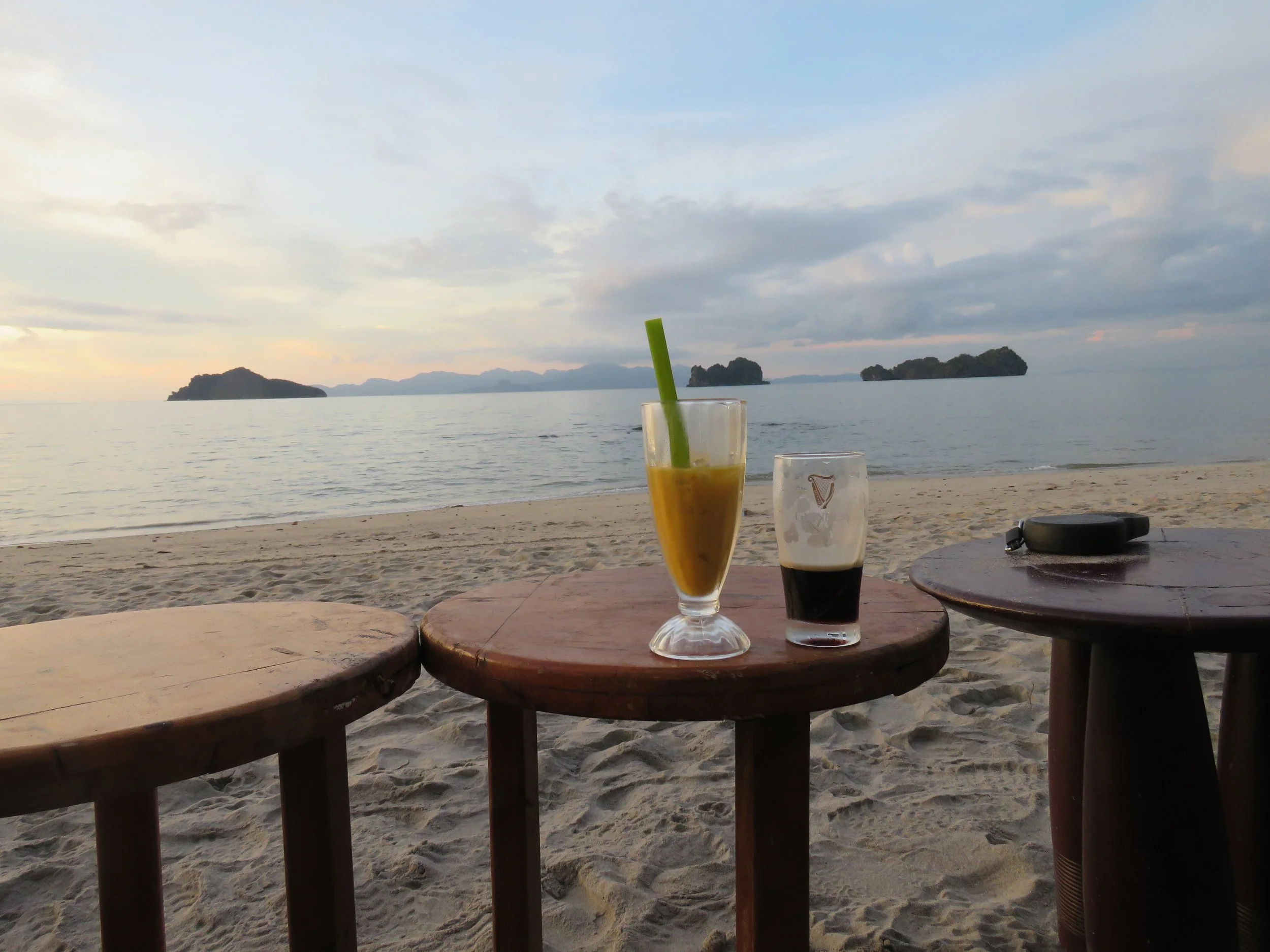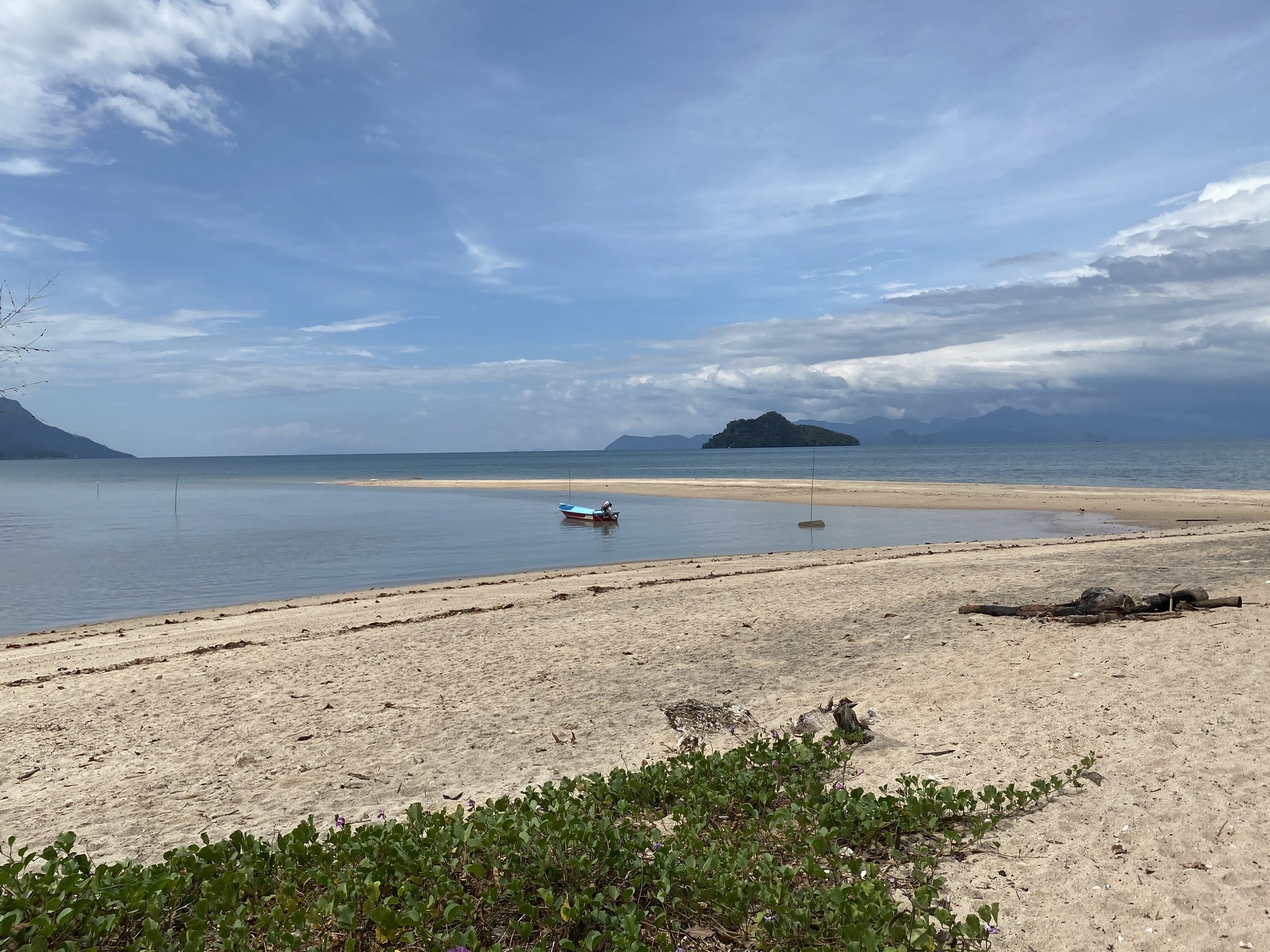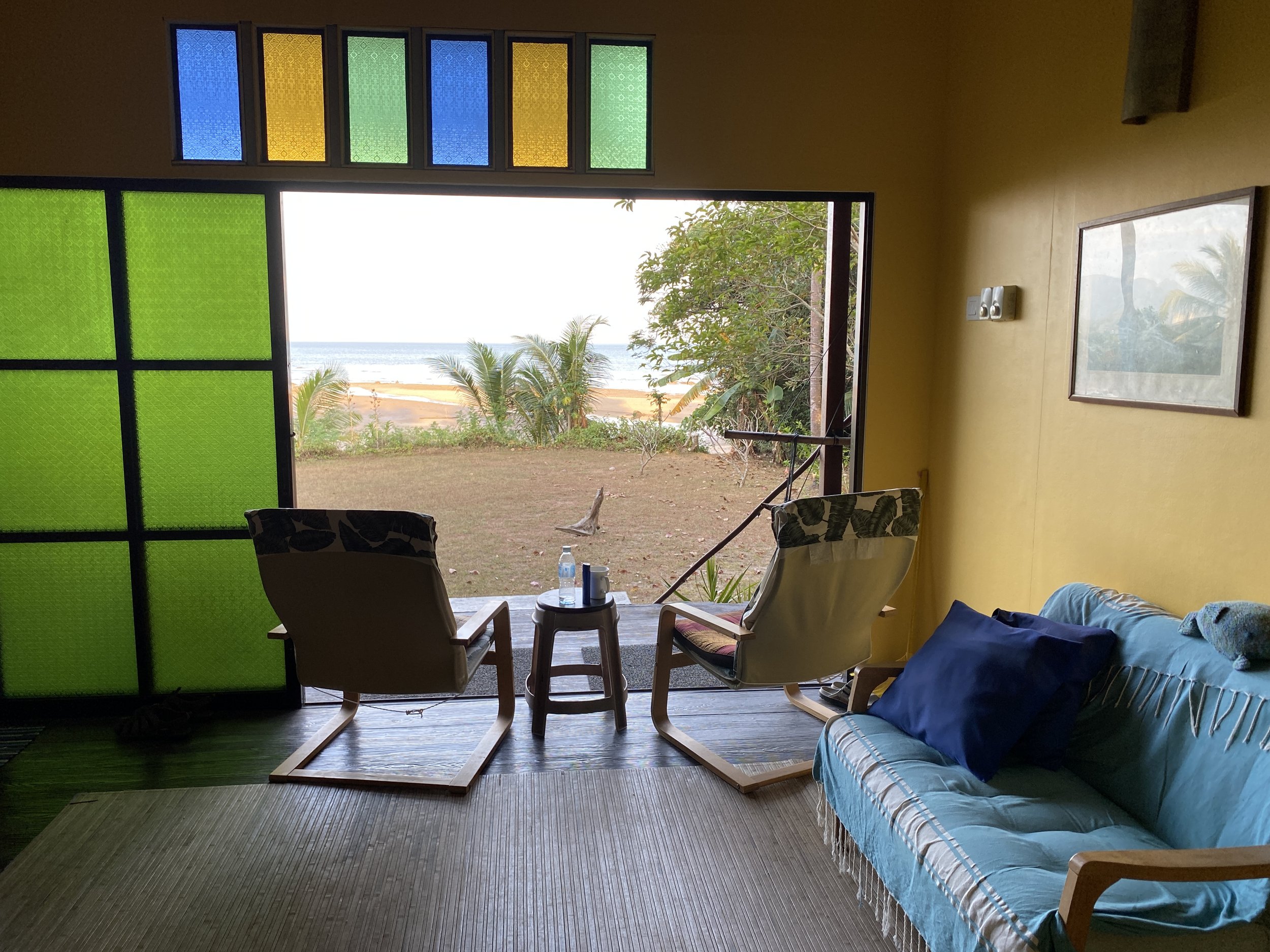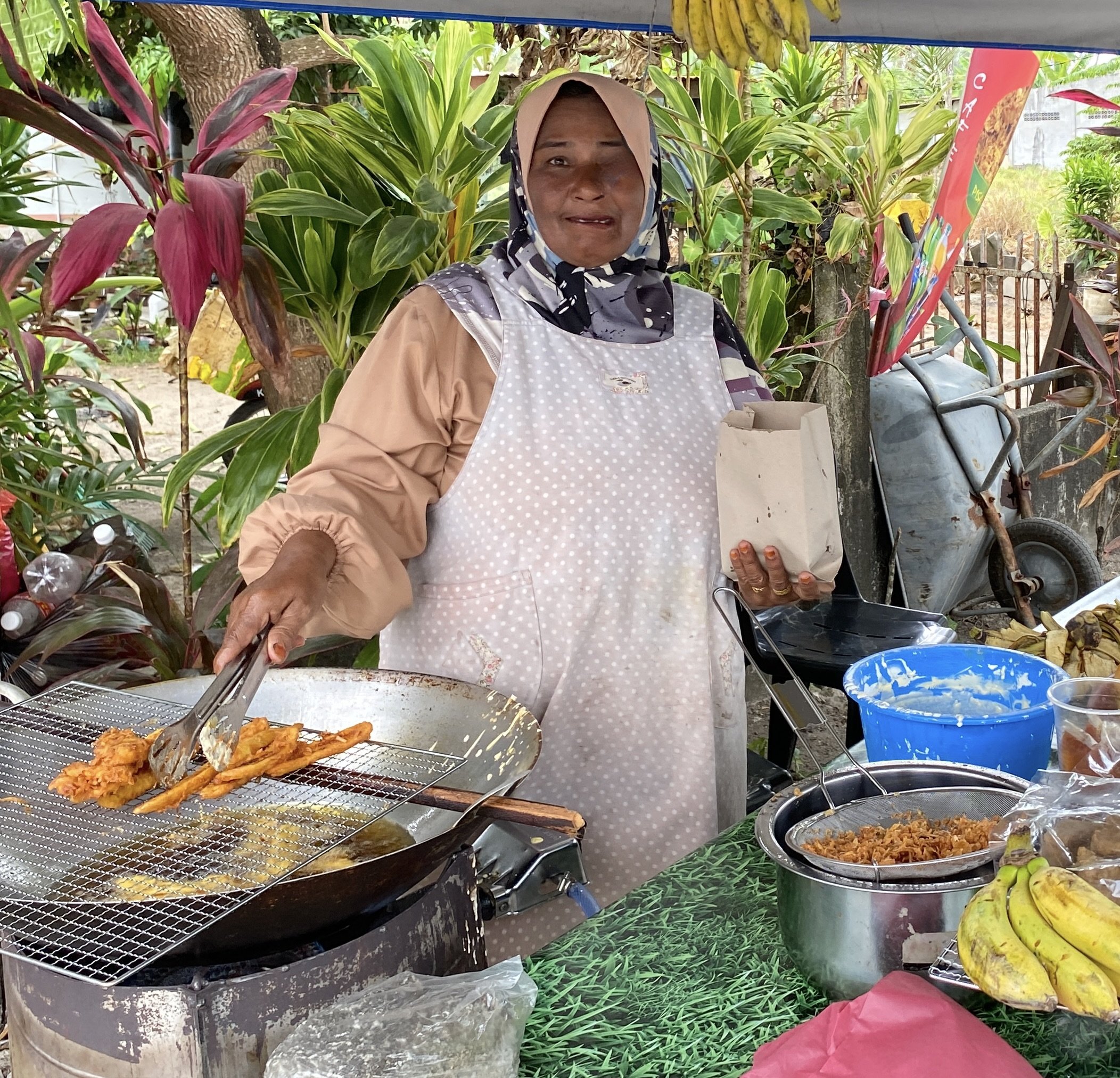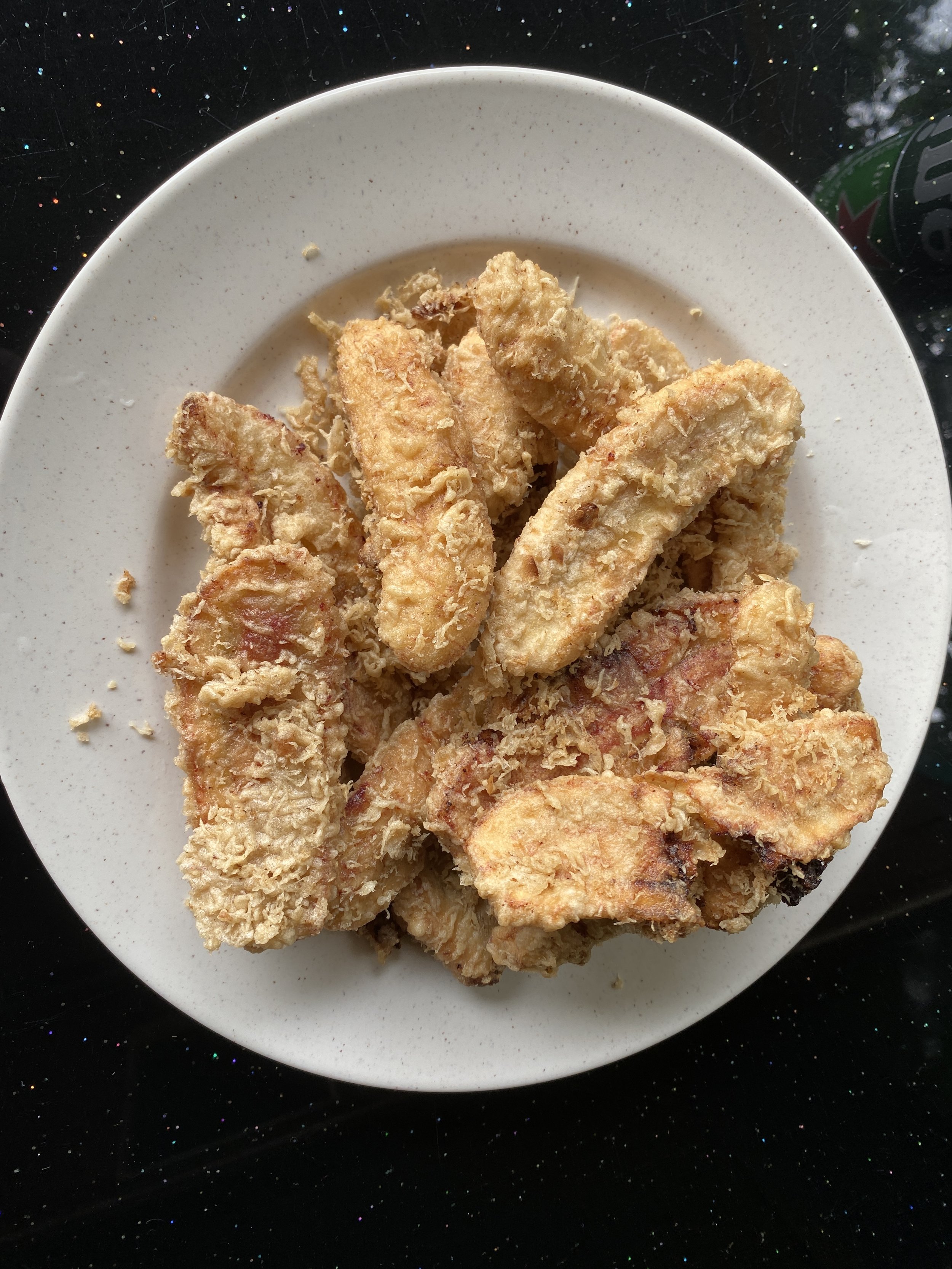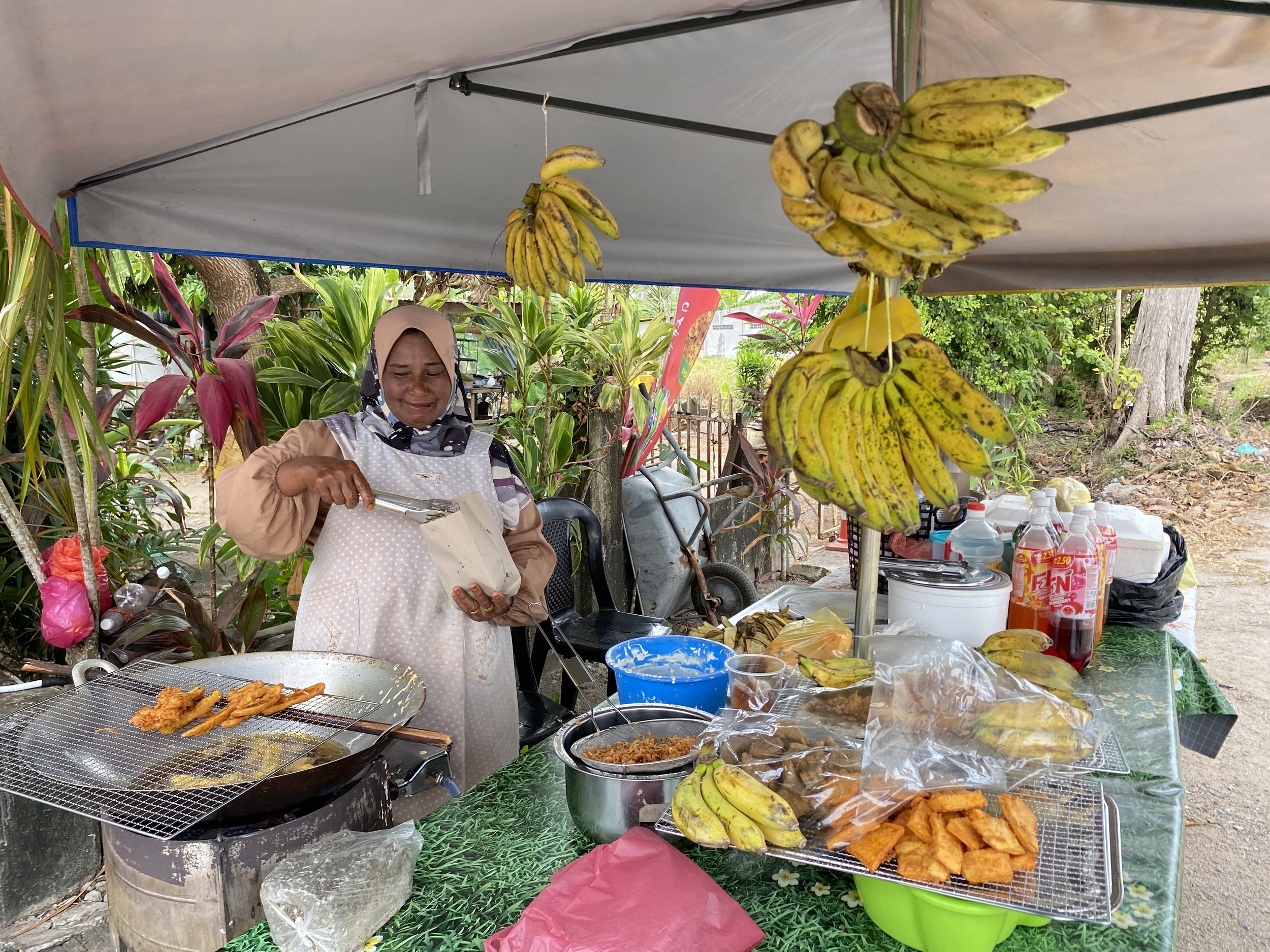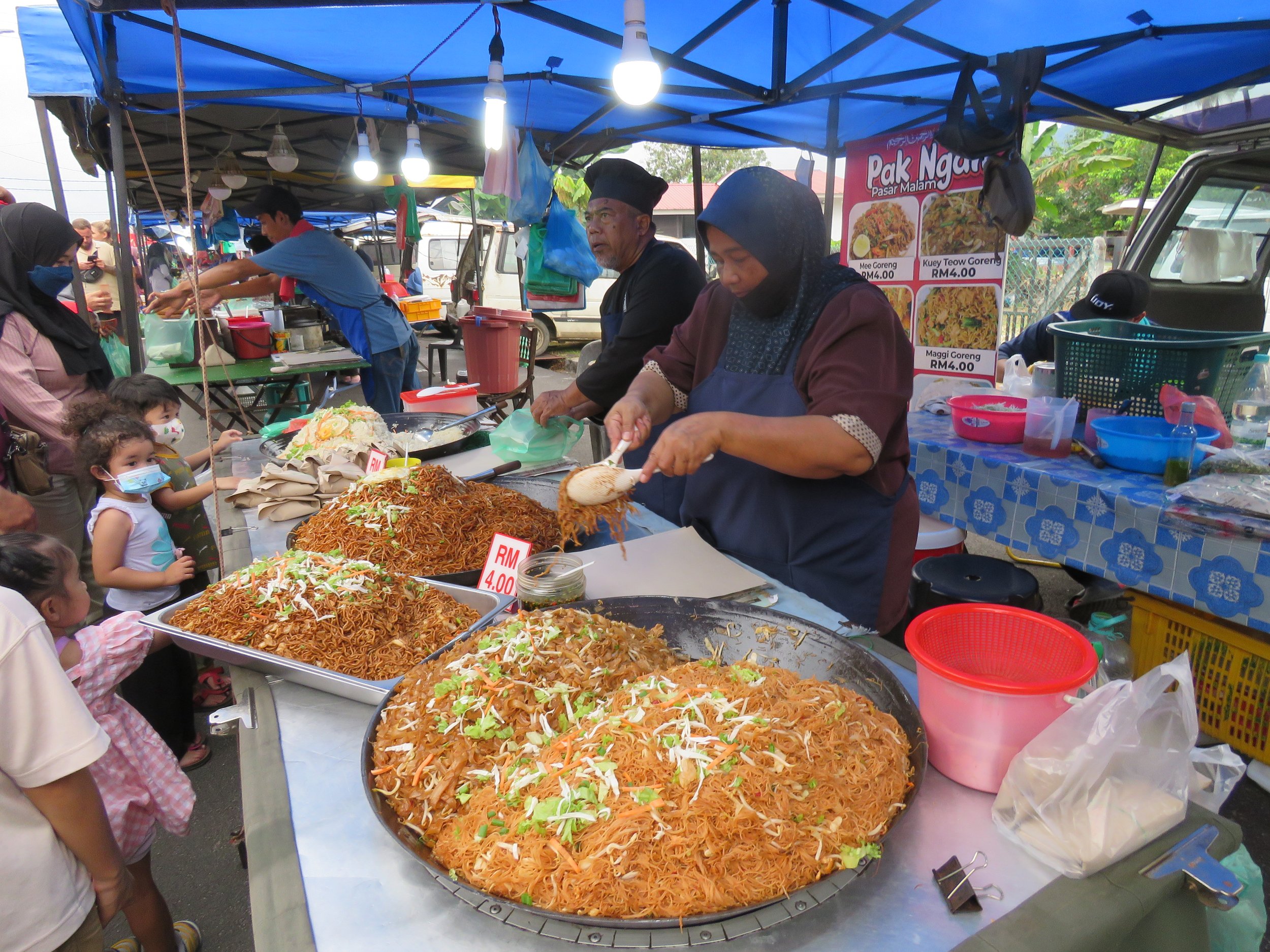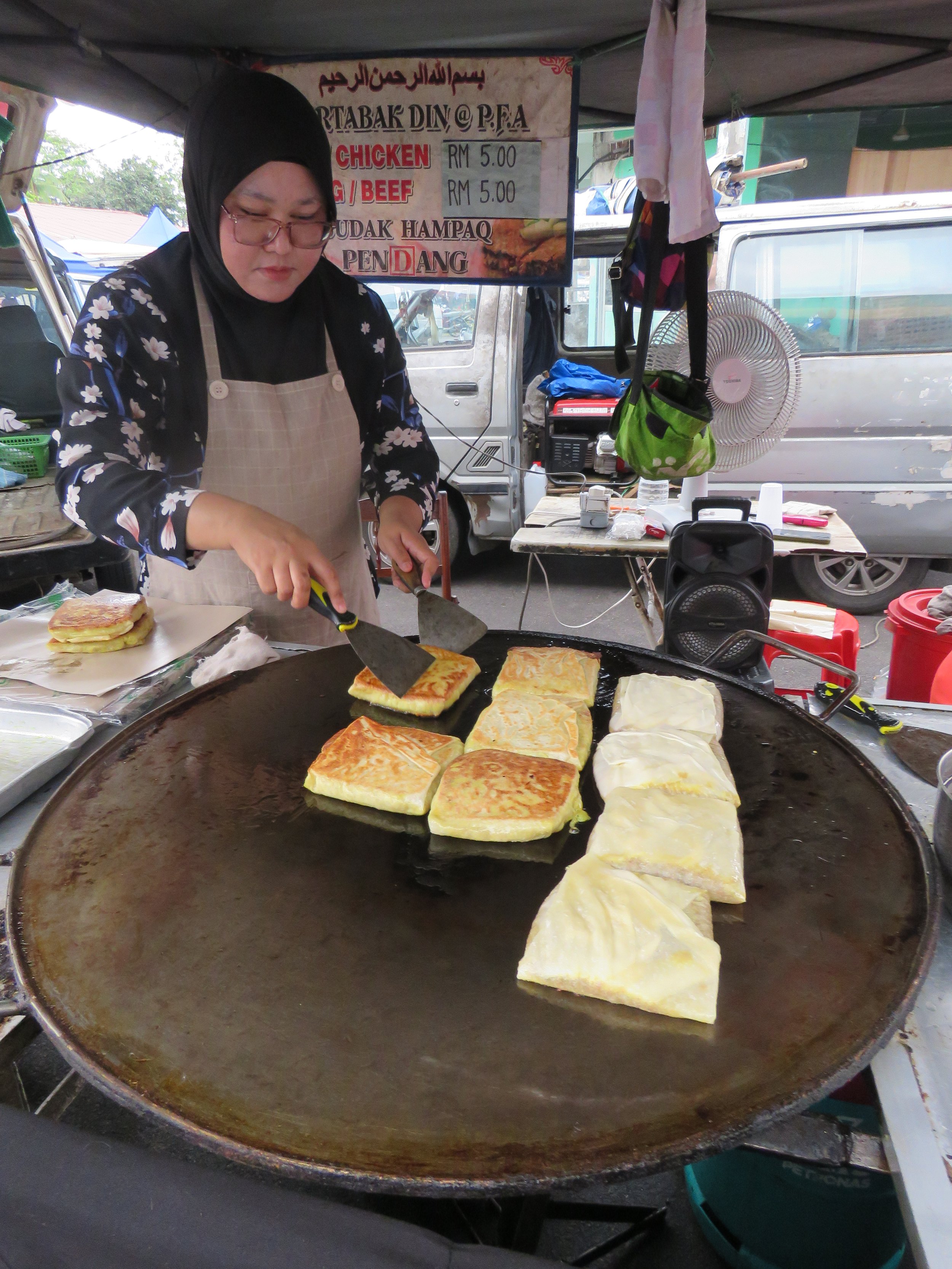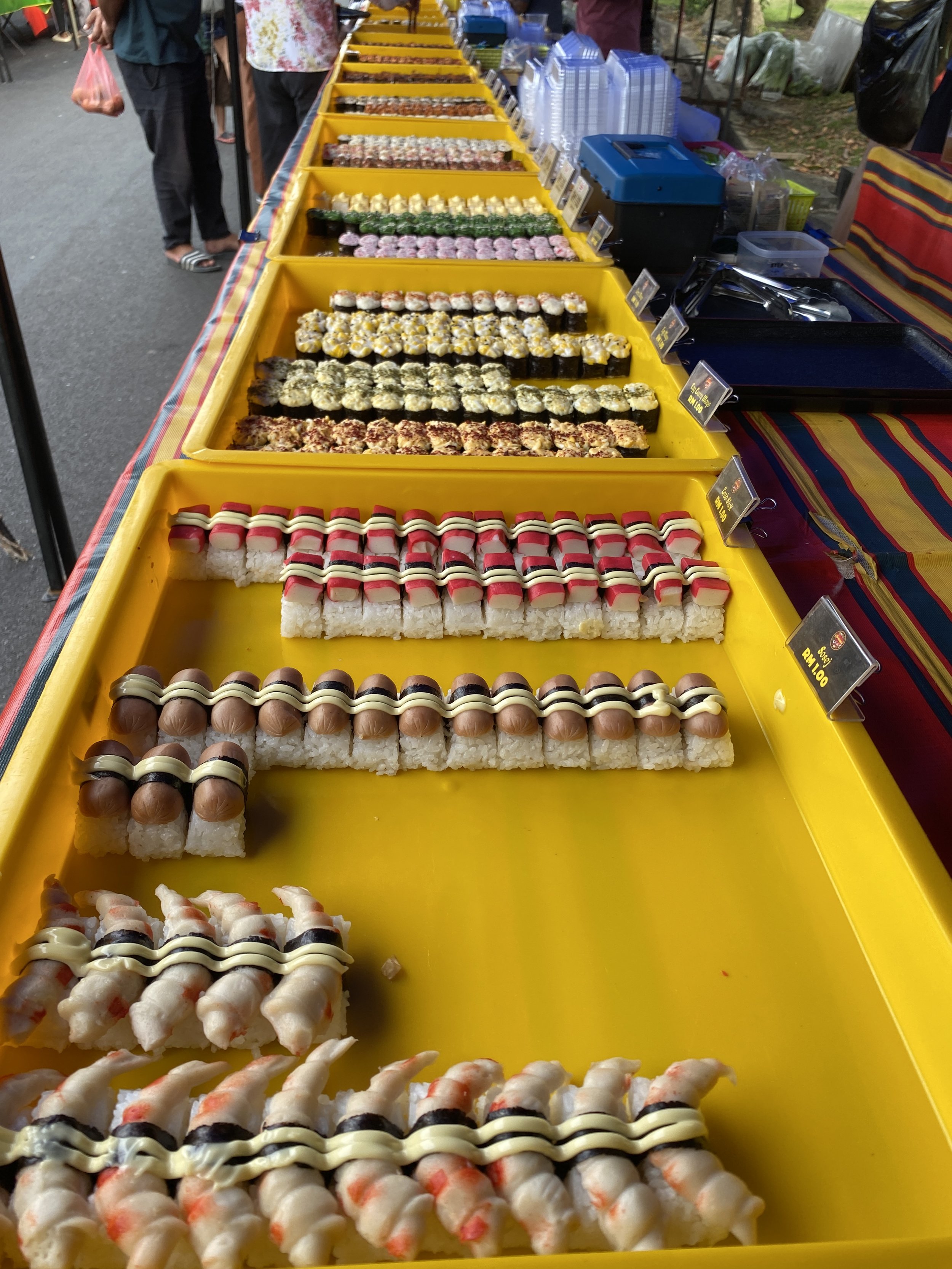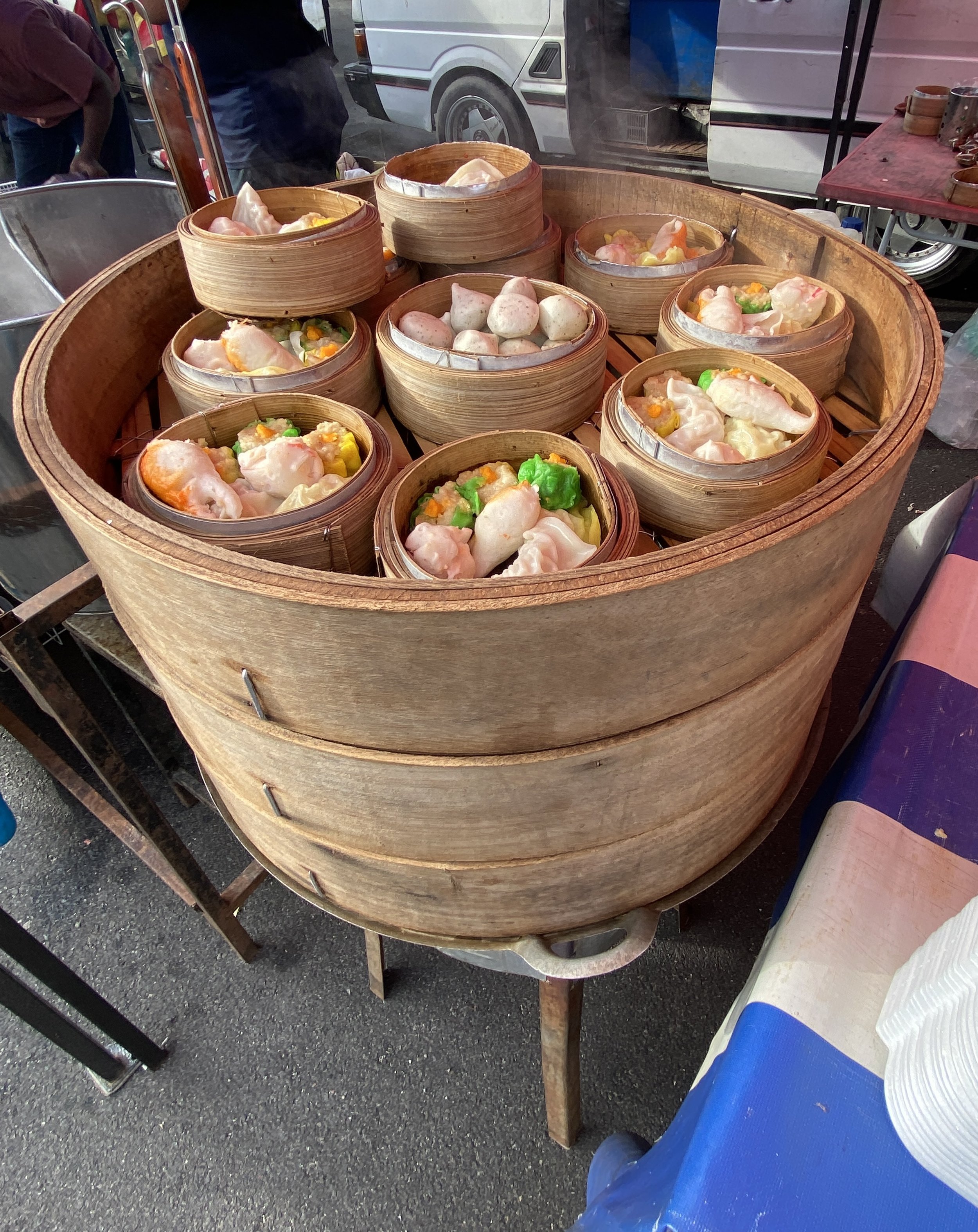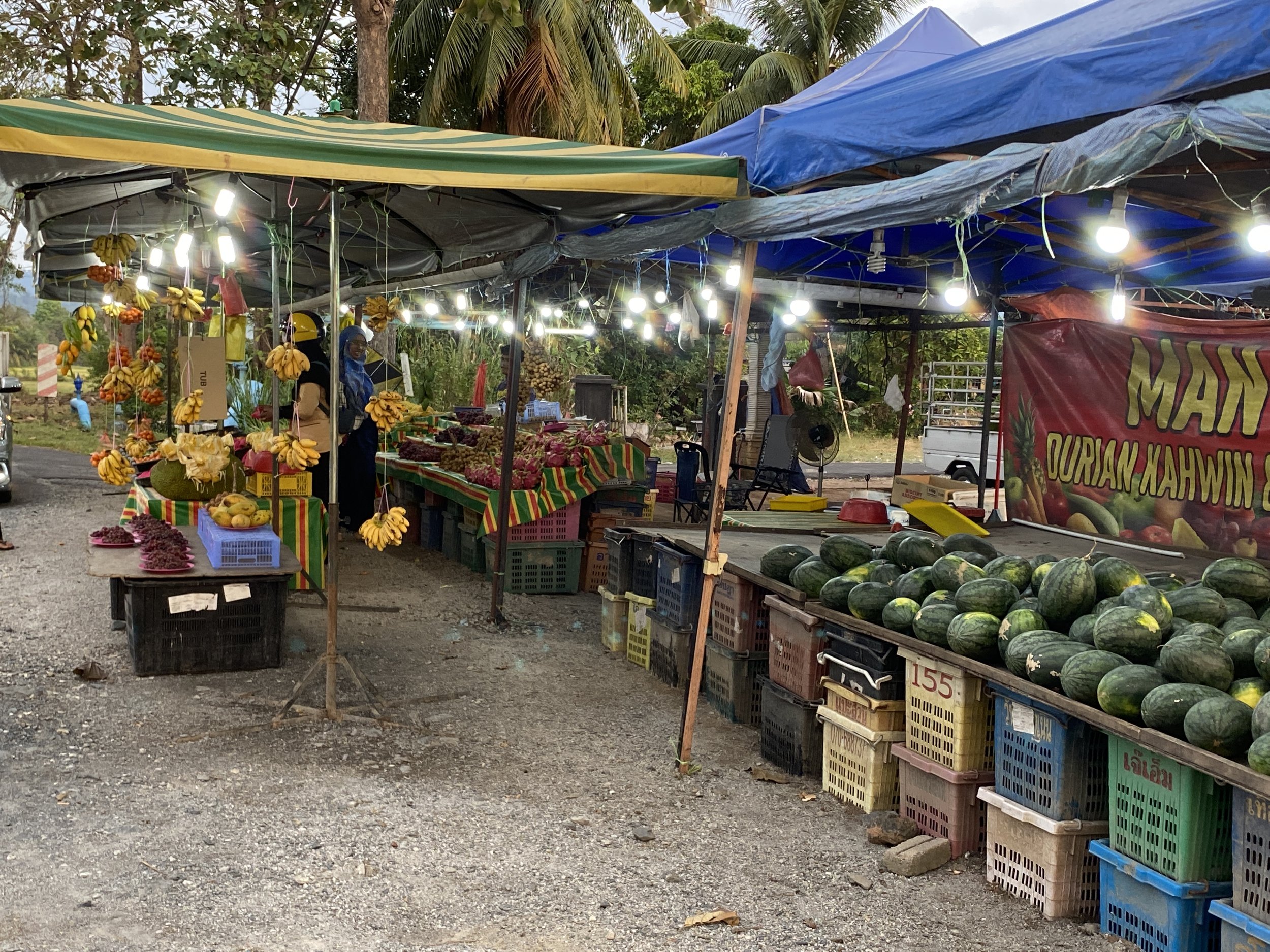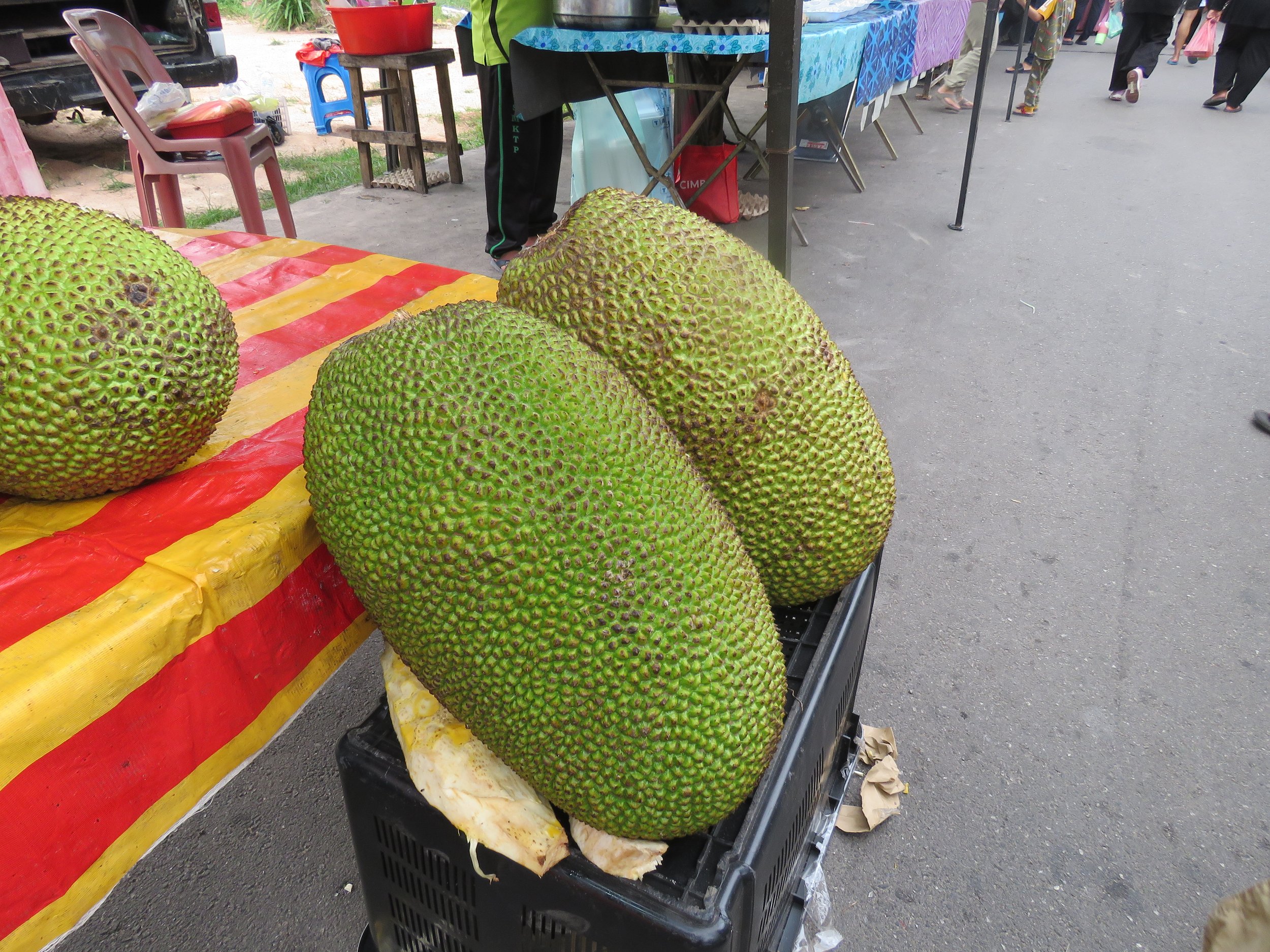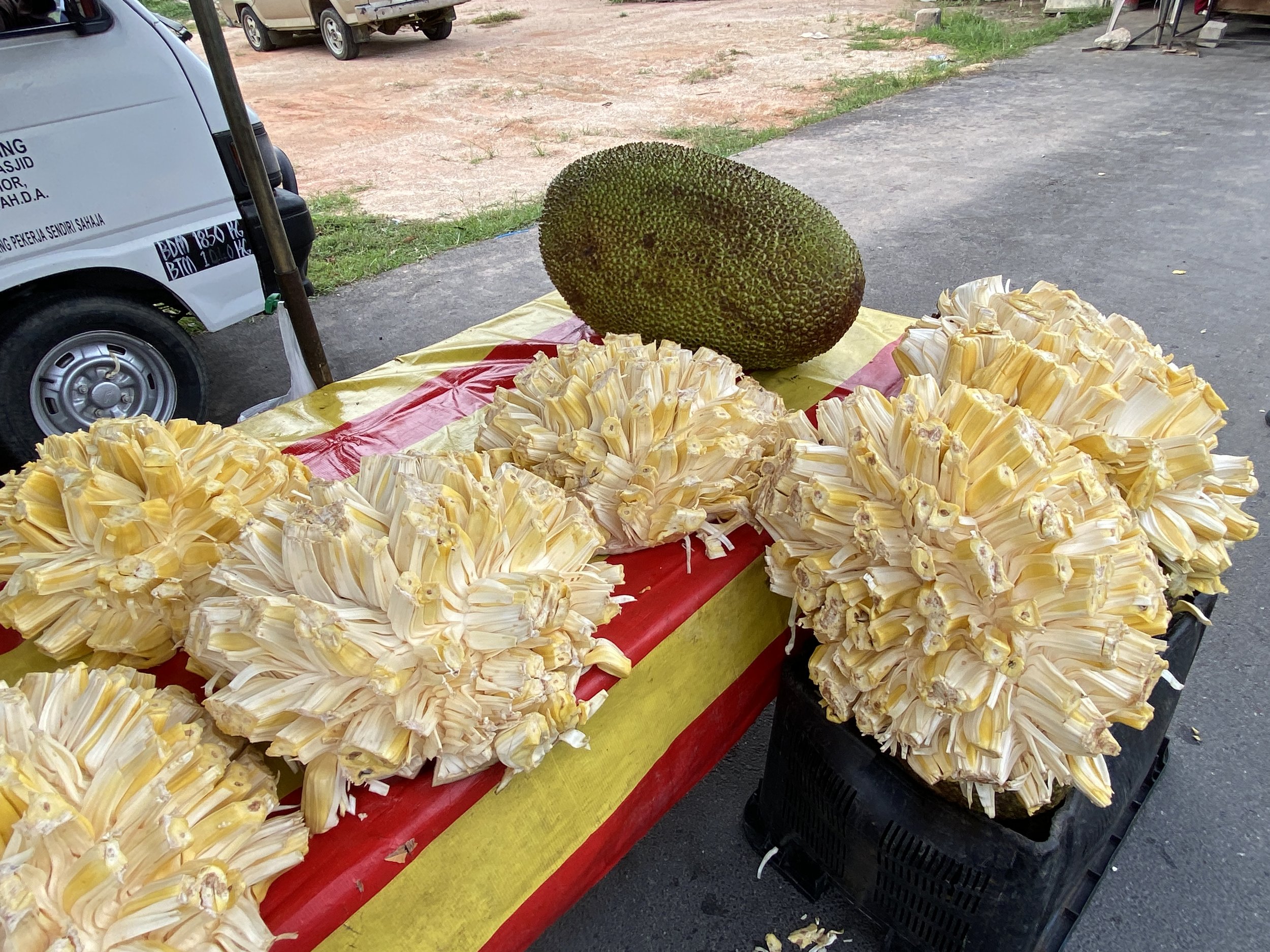The island of Langkawi in northern Malaysia, is roughly three times the size of Salt Spring Island. The population is also about three times that of Salt Spring so it’s quite comparable. The balance between locals and tourists might also be similar. But on Langkawi the tourists seem to be more concentrated in one area. Langkawi has been declared a tax-free zone so it is a popular destination.
When we were researching before our trip, we read books like Lonely Planet and lots of websites. They all mentioned that the south west coast, Cenang, was were all the tourists stay. So we actually looked on the north coast and found a quiet paradise.
The beach in the north end of the island is called Tanjung Rhu. There are several incredibly beautiful white sand beaches, blue water for swimming and almost no tourists on the north end.
In contrast to the south end where we did, indeed, find nothing but hotels and resorts, roads lined with touristy shops and tons of people. This is where you want to stay if you want action: you can go hang gliding, rent a sea-doo and go dancing at night. The south end of the island offers more western food. We spotted a Pizza Hut, KFC and the inevitable McDonalds as well as more pubs with alcohol.
We chose to stay on the more local north end where there is “nothing” to do except walk on the beach, swim in the sea, read books and listen to the birds.
Din Cafe
This Thai restaurant is a 5 minute walk away. We can have dinner for two for about 8.- CAD here.
Right next door to our house is a little restaurant, called Din Cafe, right along the beach. There are plastic tables and chairs under a sheet metal roof, up on the cliff. In the bamboo branches are some small hammocks strung for children to sleep or swing in. The waiter doesn’t speak much English but enough for us to order mee goreng or lemonade. Using Google Translate on our phone we were able to figure out what all the different dishes on the menu were.
It seems that every woman who can cook something, has built a business in front of her house. Every few houses along any road there is a corrugated metal roof over plastic tables and chairs, a menu on a slate and a small corner kitchen. And even though they all offer similar food, they also have enough variety to chose specialty things at each place: chicken satay or fried bananas.
And every little restaurant has a sink to wash your hands before and after dinner!
One of our favourites became a roti stand. The sign said ‘Roti Canai’ which kept me thinking you could get a ‘root canal’ done there. But while the wife served and took orders, her husband tossed and rolled small dough balls - roti canai - until they were as thin as plastic wrap, then fried them, folding them this way and that until he had a neat little package. These come plain or filled with cheese or meat or onions. My favourite is banana roti.
The only draw back to all these lovely local food stands is that the owners seem to open only if they feel like it. Even Google Maps says ‘they may not be open so double check’. The roti stand sign said ‘open’ for 4 days while it remained closed.
Right next door, the neighbor also opened a food stand. Just a woman outside her house, with a table and a propane stove by the road. We wonder what kind of regulations or food safety control there might be here… She has bunches of bananas hanging on strings. She slices them lengthwise, dips them in batter and fries them in hot sizzling oil. The best snack: pisang goreng, fried bananas, hot and crispy! We buy about 10 of them for 4 RM: 1 Canadian dollar.
Scarborough Cafe
And we kept discovering more tiny eateries, most of them dirt cheap. We also walked along ‘our’ beach to Scarborough Cafe - a fish and chip place along the beach where many people come to sip Guinness while watching the sunset. Scarborough is obviously a ‘western’ place and offers alcohol but Malaysia is a mostly Muslim country so there’s no alcohol served in regular local eateries, and no pork either. If you order Hawaiian pizza it comes with beef and pineapple, no ham. We ordered a chicken cordon blue which only had melted cheese inside, no ham. Malaysia’s most popular foods include nasi champur - fried rice, and laksa - a spicy noodle soup. Nasi lemak is served everywhere and is rice steamed in coconut milk. One of my favourite snacks here is Apam Balik - a crispy fried ‘pancake’, folded double with a think layer of ground peanuts and corn in the bottom.
One other funny quirk in almost all restaurants here, is that once you order your meal, the one and only cook starts chopping and stirring and frying. One meal at a time. Very fresh but when the first meal is ready, one of us gets served while the other one watched him/her eat. Much later, the second meal arrives….
Every night of the week there is a Night Market in a different location around the island. We walk to the one nearest us on Friday nights and stock up on fresh fruit and try the amazing array of food.
I love pulling up at a fruit stand to stock up on fresh local mangoes, pineapple, bananas and water melon. When I ask for a watermelon we can eat now, the owner pounds his fingers on a variety of watermelons until it sounds just right and he says ‘This one!”. They are beautiful juicy, especially when we keep them in the fridge for the perfect hot-afternoon snack.
And while we like all of the little local eateries that offer mee and nasi goreng, we also enjoyed finding a state of the art Italian restaurant, Gallo Nero, which offers a 3 course menu on weekends for the price of a dinner entree. The local eateries, though, are much cheaper, amounting to about 7.- or 8.- CAD (around 5.- or 6.- US/Euros) total for the two of us. One newly opened place we visited is an Italian pizza place. A guy just built a stone oven in his front yard, put up some tables and a sign and voilá: we ate woodfired pizza in his yard.
Many lunch restaurants along the road consist of a huge buffet. You just take a plate and select what you like. The owner walks by, estimates what’s on your plate and gives you a price. We treated two others to lunch at one of these buffets. The grand total for 4 people was 40 RM or about 10.-.
We stopped along the road at a stall which sold tasty deep fried potato balls filled with beef. We also liked their tiny soft buns with nuts on top and a caramel dipping sauce.
There are also stands with enormous jackfruit - it looks interesting but I find it a little bit tasteless. And then of course you can smell the fruit stands that sell the infamous durians! Durians are prohibited in some buildings and on airplanes because of their powerful smell. And even driving by inside a car, you can smell where they are sold. Durians are definitely an acquired taste.
So, are you hungry yet? Better go fry up some bananas!
